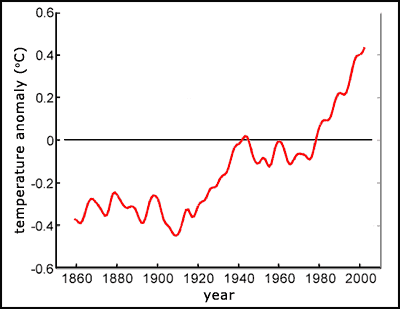Sunday, November 30, 2008
Global Warming a Hoax?
Monday, November 24, 2008
Global Warming Causing Bigfoot to Move North?
(also see http://www.sciam.com/blog/60-second-science/post.cfm?id=is-global-warming-forcing-bigfoot-t-2008-11-18)
the video is from: http://www.youtube.com/watch?v=gMsi9OmaMJ0
Greenhouse Gas Effect
The following from: http://www.emra.gov.uk/images/imgdb55d7e21e5fbfdc96a5d5bfef31b67a.jpg

Friday, November 21, 2008
Carbon Dioxide levels
The Following is from: http://sustainability4future.blogspot.com/2007/12/science-of-global-warming.html
What is Global Warming
The Following is from: www.helpsavetheclimate.com/
Update: the warming trend for the last 50 years is 0.13oC per decade, nearly twice that for the previous 100 years. The total global average temperature increase from 1850-2005 is now 0.76oC.

Anomalies are often used, rather than absolute measures, as the nature of the data frequently shows changes in quantities better than absolute. The anomaly is plotted against some reference figure, in this case the 1961 to 1990 average temperature. As shown, global average surface temperatures have been higher than this average for at least 20 years. Also, since 1979, land temperatures have increased about twice as fast as ocean temperatures, 0.25oC per decade against 0.13oC per decade respectively (Smith, 2005). Update: 11 of the last 12 years (1995-2006) were among the warmest on the surface temperature record.
